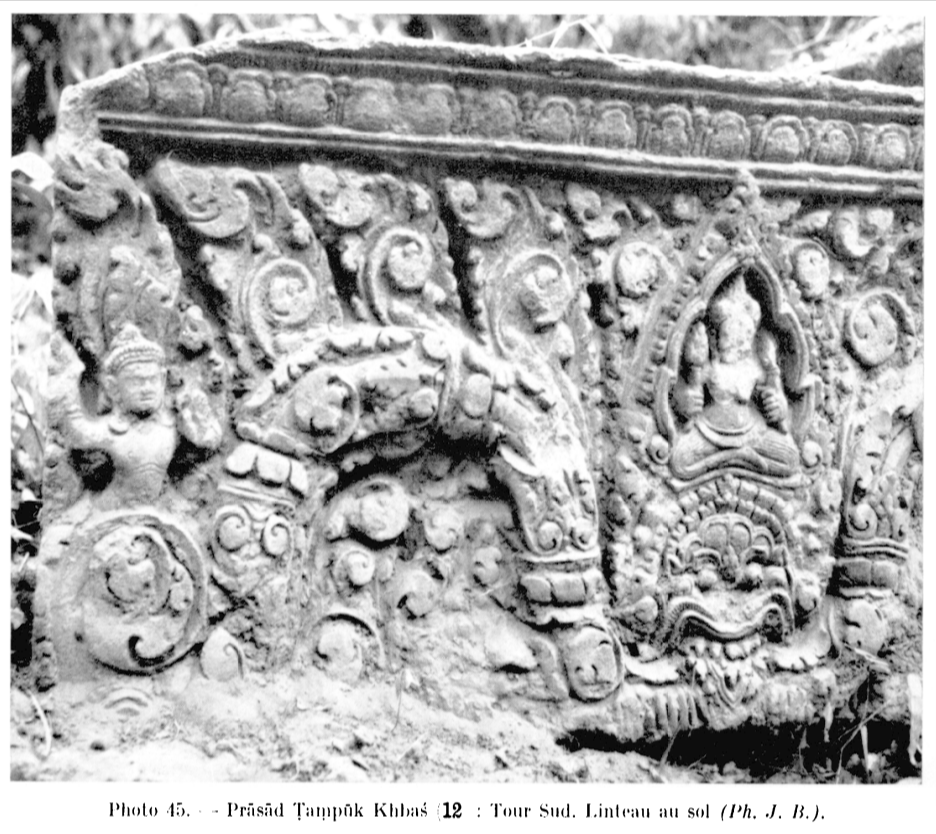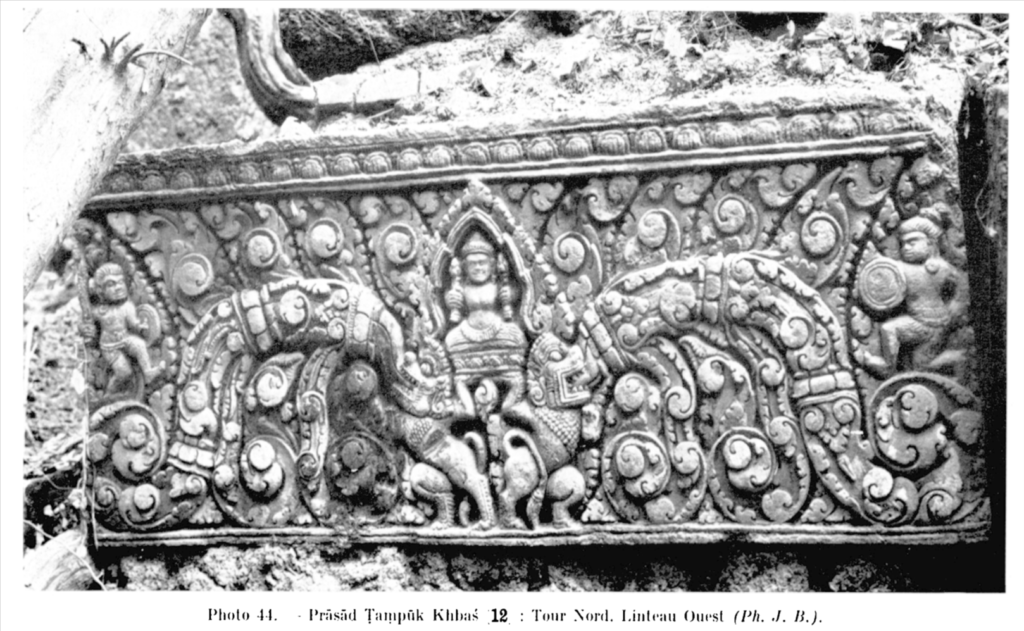- Area: Siem Reap Province > Svay Leu District > Ta Siem Commune > Dambok Khpuos Village
- | Type: Ancient Remains & Temples
Located north of Phnom Kulen in Svay Leu district, it is the remains of what were three brick towers. Presently the site is overgrown and only remnants remain. An inscription was recorded here under K. 196.
The earliest report on the site comes from a brief note by E. Aymonier in the late 1800s, then H. Parmentier, with the most detailed being that by Boulbet and Dagens in the 70’s which a translation follows
This monument currently comprises two more or less ruined sanctuary towers, built of brick, laterite (upper parts) and sandstone (doorframes); the north tower, the largest, was undoubtedly the central element of a set of three towers. Nothing remains of the enclosure, however, we can still make out the traces of the moats and to the east a mound preceded by two lions seems to be the vestige of an entrance pavilion from there leads a causeway that leads to a rectangular basin.
The north tower, square in plan, opens to the east and has false doors in sandstone on the other three sides. The decorative composition (the three remaining lintels East, North and West) is very uniform and only the central motifs and the characters overlapping the ends of the branches differ from one to the other. To the east (photo 42) we find a god holding a lotus, seated in royal ease under an arch and on a platform with a lotiform base which itself dominates the head of a monster. The latter, with its paws and its mouth, embraces two lions who are spitting out branches of foliage. The extremities of these are bordered by garuda busts. In the North (photo 43) Indra brandishes his vajra; under an arch, he is mounted on Airavata framed by the two lions which spit the branches of foliage; at the ends of the latter are seen male figures kneeling on the ground and waving their arms. Finally, in the west, (photo 44) a goddess holding two lotuses (Laksmi) is seated under arch on a lotus throne supported by the two erect lions spitting out foilage; at the end of these, warriors with hair in a bun and armed with a sword and a shield are represented passing towards the center.
The South tower is much more ruined and we only see a lintel on the ground (photo 45) similar to the previous one, it bears in its center the image of Laksmi seated above the head of the monster who hugs the branches, at the ends, busts of diademed male figures facing the center of the composition and arms in air.
The southern doorjamb of the North tower bears an inscription published by G. Codes. This inscription in poor condition bears a date (1005 AD=927 saka) and seems to be nearly a quarter of a century later than the construction of the towers if we are to believe the lintels of the latter.




References
- Les Sites Archeologiques de la region Bhnam Gulen, Boulbert and Dagens 1973
Map
Site Info
- Site Name: Dambok Khpuos (Pr.) Khmer Name: បា្រសាទដំបូកខ្ពស់
- Reference ID: HA11533 | Posted: January 18, 2021 | Last Update: December 24th, 2022
- Other Names: Tampuk Khbas, Dambok Khpuoh
- Tags/Group: Kulen, pr, Temples
- Location: Siem Reap Province > Svay Leu District > Ta Siem Commune > Dambok Khpuos Village
- MoCFA ID: 244
- IK Number: 249
- Inscription Number/s: K. 196
